Kastamonu is a settlement within the Hittite Empire. Later, it entered under the Phrygian and Lydian Kingdom’s rule. In 3 BC, it came under Persia’s rule. Kastamonu contains within different cultures such as Alexander, Pontus Kingdom, Romans, Byzantine, and Ottoman. It is worth seeing thanks to its historical development; in particular, the Kastamonu Castle, built during the Byzantine period, forms the historical core of the city and offers visitors different alternatives with its splendor.
The land is surrounded by mountains and rugged terrain. The Western Black Sea Mountains, Isfendiyar Mountains (Globes), Göynük Mountain, Yaralıgöz Mountain, Guruh Mountain, Kurtgirmez Mountain, Sirganlı Mountain, Elek Mountain, Ballıdağ, and Harami Mountain are among the known mountains of the city. Ilgaz Mountain is in the south of the city.. During travel in Kastamonu, one can encounter places that play host to some of the world’s most famous national parks, such as Ilgaz Mountain and Küre Mountain.
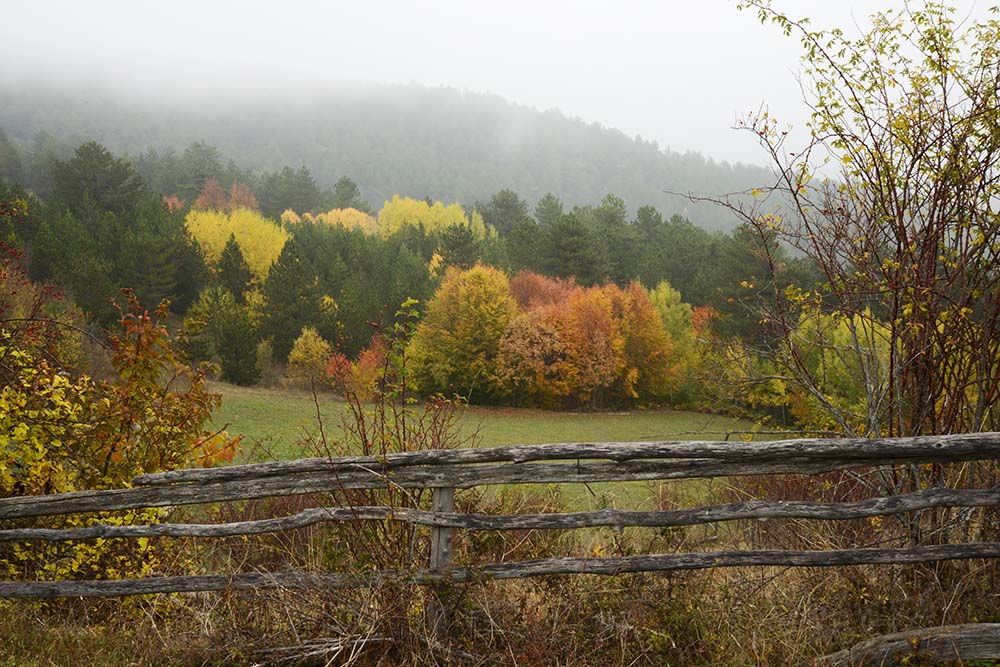
Kure Mountains National Park.
Çatalılgaz Hill is the highest point of the region at about 2,565 meters. The Devrez Stream, the Gökırmak Stream, and the Araç Stream are used for irrigation since Kastamonu is inefficient in terms of water supply. The most important region is the Gökırmak Valley, but there is also the Tosya Plain in Devrez Valley. The city is located along the coast and has a 176-kilometer coastline. It has a mountainous area and also the seashore, so naturally it boasts 2 different climatic types too. The vegetation varies in areas where the black sea climate or the continental climate dominates. Dozens of trees such as linden, chestnut, hornbeam, scotch pine, black pine, fagus, fir, poplar, and hazelnut grow here.
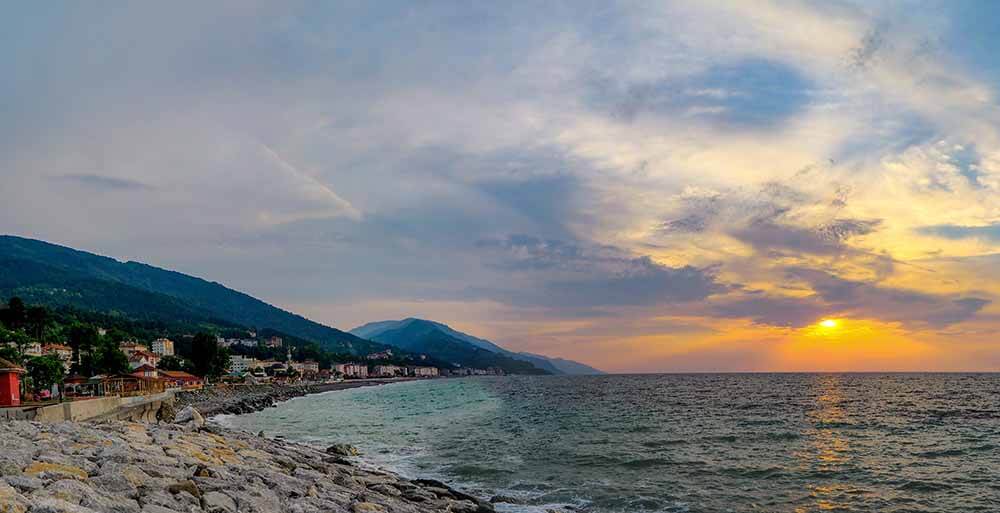
Inebolu coastal view and sunset.
Kastamonu has an important place in our history. In the period of national struggle, the most reliable region in the field of logistics was cited as Kastamonu. Thus, ammunition and supplies for Ankara were provided from the Kastamonu/İnebolu Port. At the same time, during the War of Independence, Kastamonu was one of the cities that produced the most martyrs. Apart from this national heritage, we should mention its historical richness and cultural heritage. You can enjoy an unforgettable visit thanks to its rich woodlands, diverse vegetation, and animal life. Ilgaz Mountain is also a ski resort in winter and a picnic area in spring and summer. Enjoy Valla Canyon, with its wild nature, and also Ilgarini Cave, which is one of the largest caves just waiting to be discovered by adventure lovers.
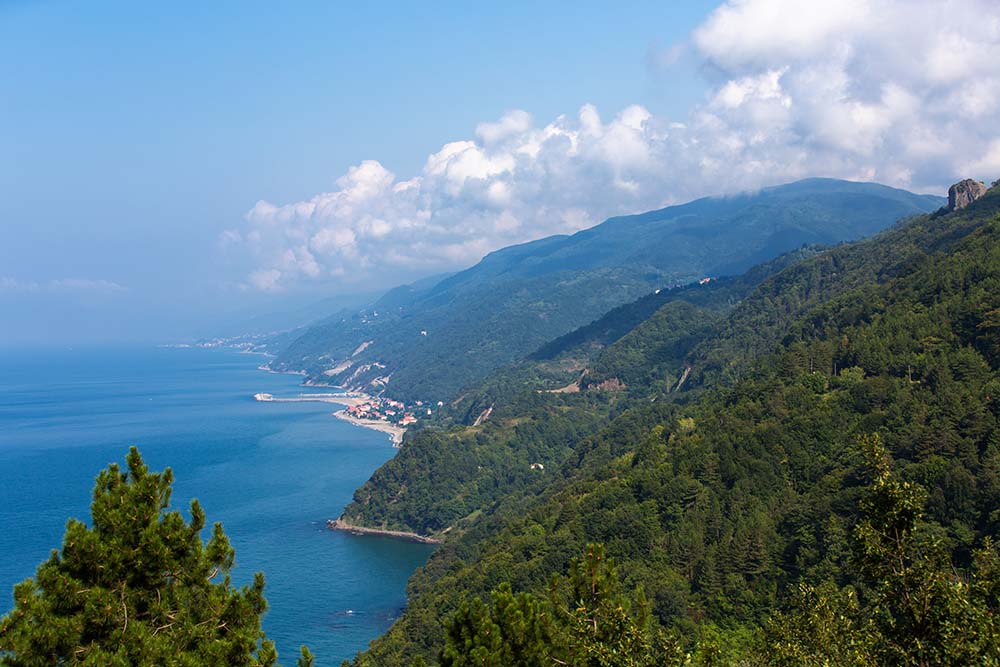
Where green meets blue….
Places to Visit
Kastamonu is among the heavenly corners of our country with its panoramic views, mountains of emerald color, and lush plains. Historical structures such as İsmail Bey Complex should be visited together with the tomb of Sheikh Şaban Veli. Mahmut Bey Mosque, which have stood still since 700 years, offer us historical stops on our journey. Kastamonu Castle from the Byzantine period and symbol of city Kastamonu Historical Houses are the other historical structures. Kastamonu’s thousands of years of history make it quite mysterious. If you want to solve this mystery and see the remains of archaeological excavations, go to the Kastamonu Archaeological Museum and Liva Pasha Mansion Ethnography Museum. Pompeiopolis Antique City and Zımbıllı Tepe Mound are also places that should not be missed.
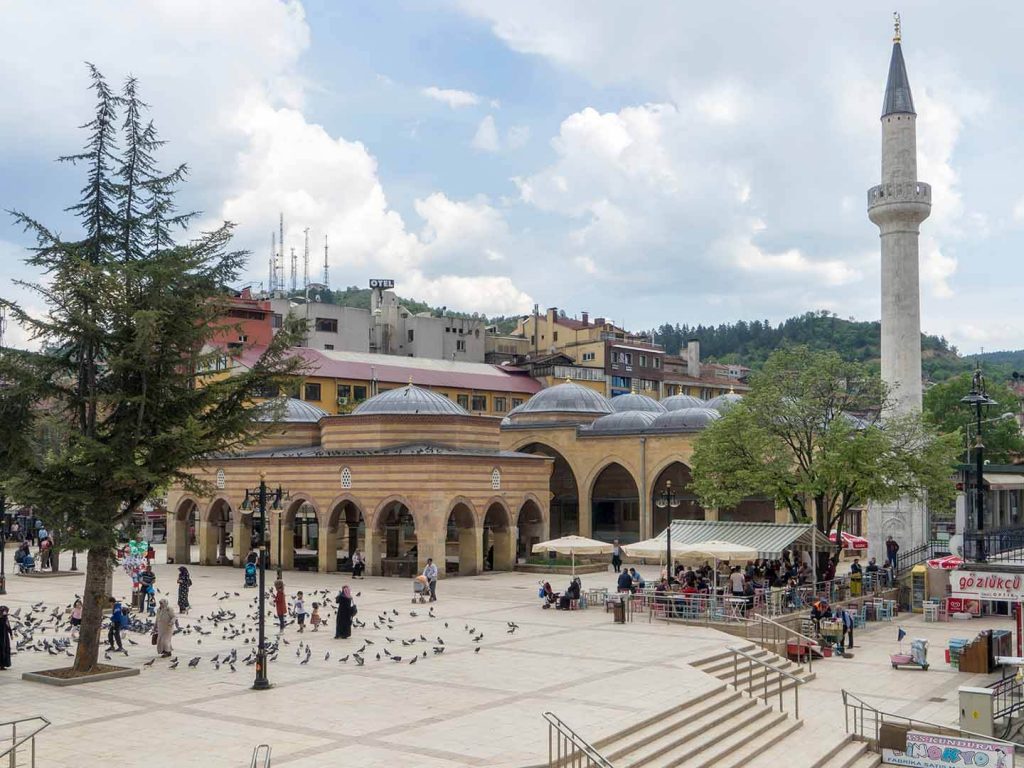
Nasrullah Kadi Mosque in Kastamonu city center.
You can discover the works of Ottoman architecture not only in historical buildings, but also by walking old streets. Dozens of examples that have not lost their authenticity over time include Küre, Taşköprü, and İnebolu. The city embraces everyone with its houses, delicious food, local handicrafts, beaches, and cultural history. Kastamonu and its surroundings are rich in crafts. Although different tools are being used thanks to technology, artistic values are still being preserved in this city where handicraft is important. Many skills such as point lace, linen weaving, inlace, woodworking, spoon-cutting, knife-making, basketry, lithography, and copperworking are ongoing, where serious workmanship is obvious. Lithography, prints on a white madapolam cloth, is a special technique typical of the region. Wooden crafts are prepared by hand carving or embossing, then dipped into vegetable dyes to create designs on fabric. You can see these examples with local patterns on tablecloths and on head covers.
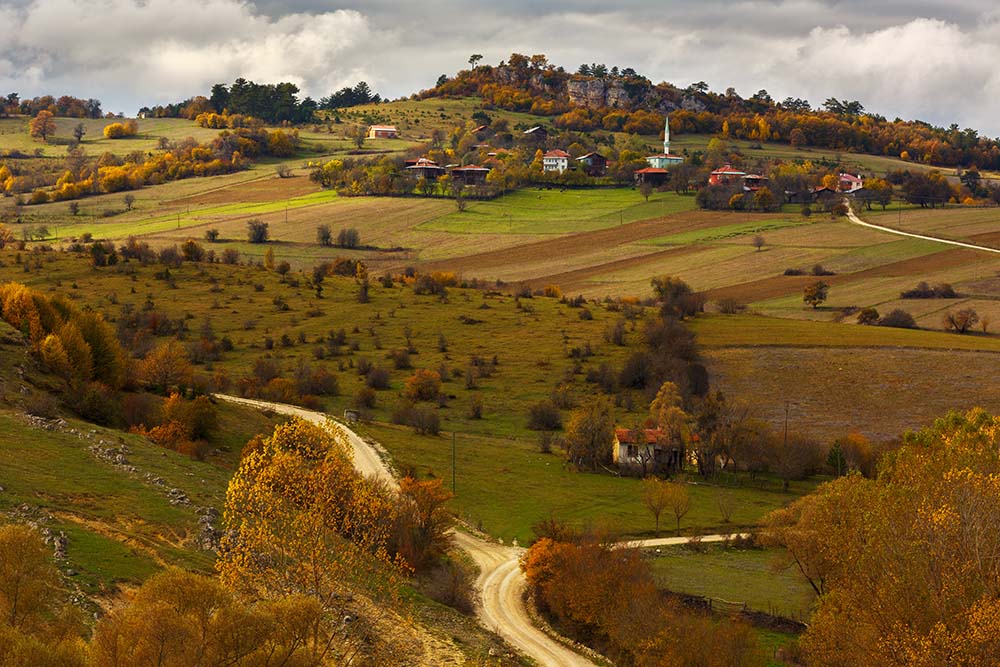
Landscape beautiful autumn nature on the hillside of Kure Mountains.
Cuisine
Thousands of years of cultural accumulation are obvious here, and even Kastamonu’s meals also come out in different forms. Meat dishes, soups, bread varieties, desserts, drinks, vegetable dishes, and hundreds of other varieties of Kastamonu cuisine are waiting to be discovered. Main local flavors such as banduman, etli ekmek (quick bread with ground meat layer on top), ekşili pilav, paça, helva, simit, kuyu kebabı (meat cooked in underground pit oven), oğmaç soup, cırık desert, and üryani eriği hoşafı (thin-skinned plum compote) should absolutely be tasted.
This city offers different cultures not just with its food, but also with the chefs and the equipment with which the food is cooked and then consumed. Copper-working in particular was developed in this region, thanks to the prevalence of copper mines here, over about 3,000 years ago. Therefore, locally produced copper cookware and service cups are also frequently used.
How to Get There
Kastamonu is easily accessible through highways. The city is well connected via bus network. Very recently, the airport has been opened.
